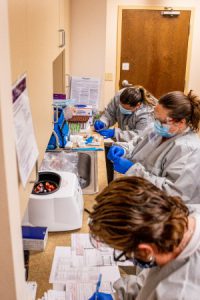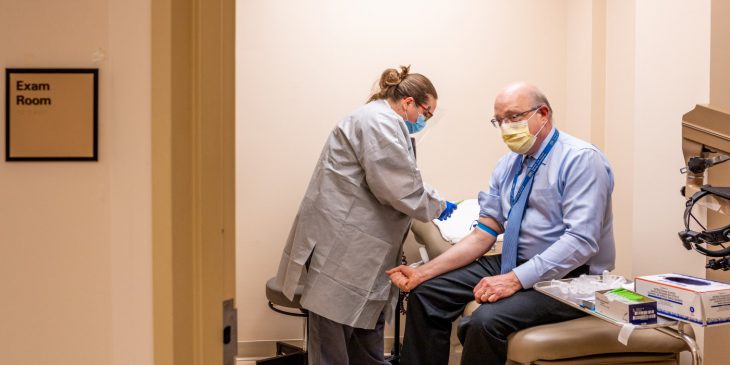As most of the communities UPMC serves prepare to move to “green” – the least restrictive of Pennsylvania’s COVID-19 reopening phases – the health system today provided an update on what its data are showing and plans to keep patients safe.
UPMC doctors also shared that the health system’s experts drafted recently passed state legislation to help long-term care providers prevent the spread of COVID-19 in their facilities, which house elderly people who are most vulnerable to the disease.
“Protecting the elderly is a critically important component of safely reopening society,” said Dr. David A. Nace, chief medical officer of UPMC Senior Communities, at a UPMC press briefing. “UPMC is sharing what we’ve learned so that long-term care facilities in our regions and nationwide can replicate our success and prevent untimely deaths.”
None of the 3,000 residents of the more than 30 UPMC Senior Communities has tested positive for COVID-19. UPMC recently began testing residents without symptoms and still has not detected the virus. The health system is also introducing antibody testing to its staff so they can learn if they ever had the virus without knowing it.

UPMC employees prepare COVID-19 antibody tests.
“We do not want to passively wait for the virus to appear – we need to hunt it down,” said Nace, who, as a UPMC Senior Communities employee, recently received the antibody testing and is awaiting results.
Dr. Donald Yealy, chair of emergency medicine at UPMC and the University of Pittsburgh, said that UPMC’s testing of patients and staff outside of long-term care facilities has also provided reassuring results. Less than 4% of all tests and only 0.2% of tests in asymptomatic patients are coming back positive, indicating that the virus is less prevalent in the communities UPMC serves.
UPMC never stopped providing patients with necessary, essential care, though only about half of the normally expected number of patients were visiting the health system’s hospitals for care during the height of public concern over the virus. In the past month, UPMC returned to nearly 100% of its inpatient pre-COVID care levels.
“The rapid return of patients to our hospitals and outpatient sites reflects the pent-up demand for care at UPMC,” Yealy said. “And we are providing this care in the cleanest and safest hospitals and outpatient sites with the best infection prevention techniques you’ll find anywhere.”









